This is the second part of my travelogue on Shantiniketan trip in January, 2015. If you missed the first part here is the link for you A refreshing Weekend Trip to Shantiniketan.
Day 2 – Exploring Visva Bharati University campus-Uttarayan-Ballavpur Wildlife Sanctuary-Sonajhuri-Shanibarer Haat and Khoai
We booked rickshaws (Rs 300 per rickshaw for a tour of the university campus including Uttarayan Complex and Rabindra Bhavan Museum and a detour to the sanctuary.)
Visva Bharati University
Visva Bharati with a sprawling campus is famous for its excellence in the study of art and music. I was amazed by the awesome sculptures made with clay and pebbles by Ram Kinkar Baij, a pioneer of modern art and sculpture in India. His works are inspired by tribal lifestyle and it is expressed through his sculptures and murals that are on display at Kala Bhavan.
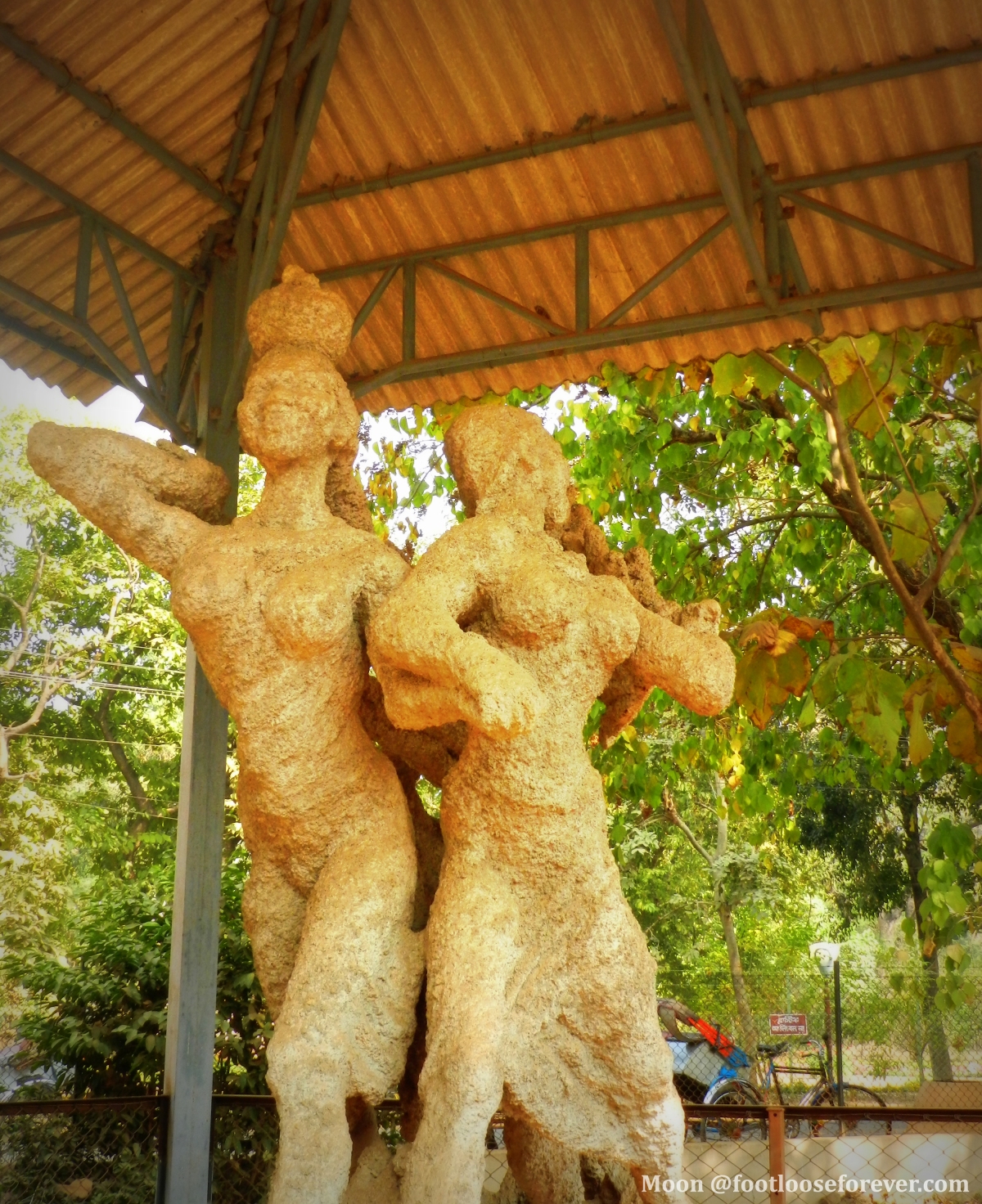
“He integrated elements of Santhal tribal art and life into his own work and enhanced them by an understanding of Western expressionism that was gleaned from books at the library of the Kala Bhavan.”
You’ll see his life-size sculptures and murals including the statues of Buddha and Gandhiji are on display at Kala Bhavan (The Heritage Complex) in the university campus.


However, I found the works of new generations artists like these are no less attractive than those of the maestro.
The famous kalobari or Black House is known for its unusual relief works designed by Nandalal Basu and his disciples like Ram Kinkar Baij. The house is built with mud and coal tar is used to design its black frescos.
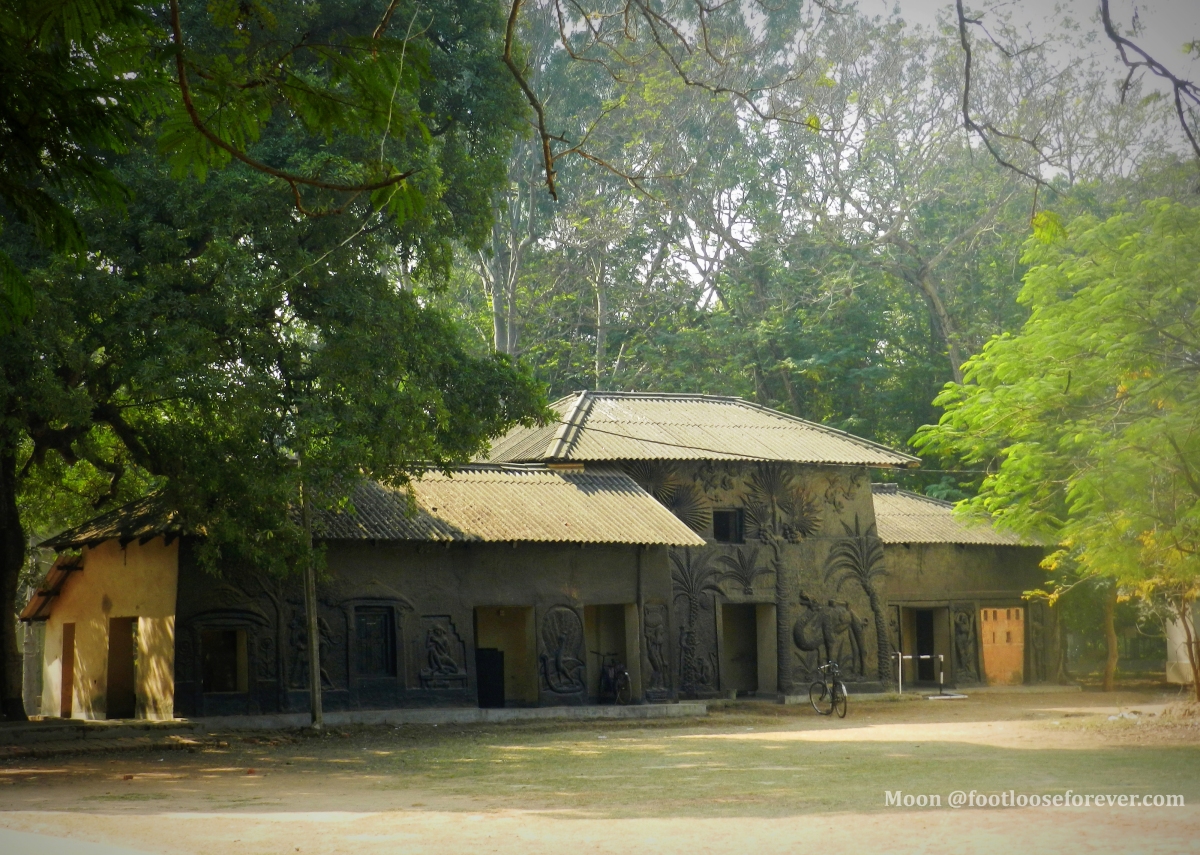
Prayer Hall or Upasana Griha of the university is made with marble and stained Belgium glasses. It was built in 1863 by the poet’s father Debendranath Tagore. The prayer hall looks amazing in gleaming artificial light during the evening service.

We stopped by the Chhatimtala, a beautifully landscaped garden area where Gurudev’s father Maharshi Devendranath used to meditate and pray. The place has a serene atmosphere where you’ll inevitably feel in harmony with nature.
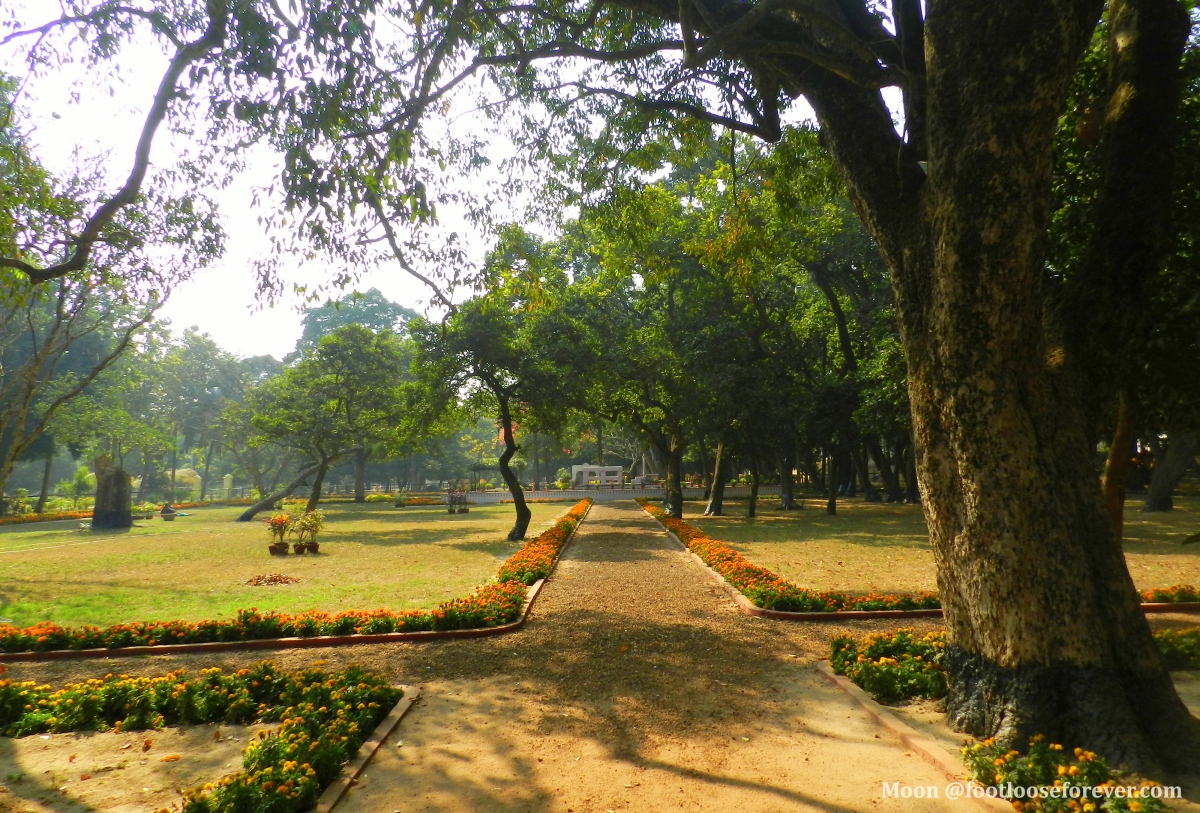
Uttarayan Complex
This is the place where the great poet and his family lived. There are five residences of Tagore named as – Udayan, Konarka, Shyamali, Punascha and Udichi and The Bichitra now turned to Rabindra Bhavan Museum which houses an impressive collection of Tagore’s belongings, especially his manuscripts, paintings and other documents.
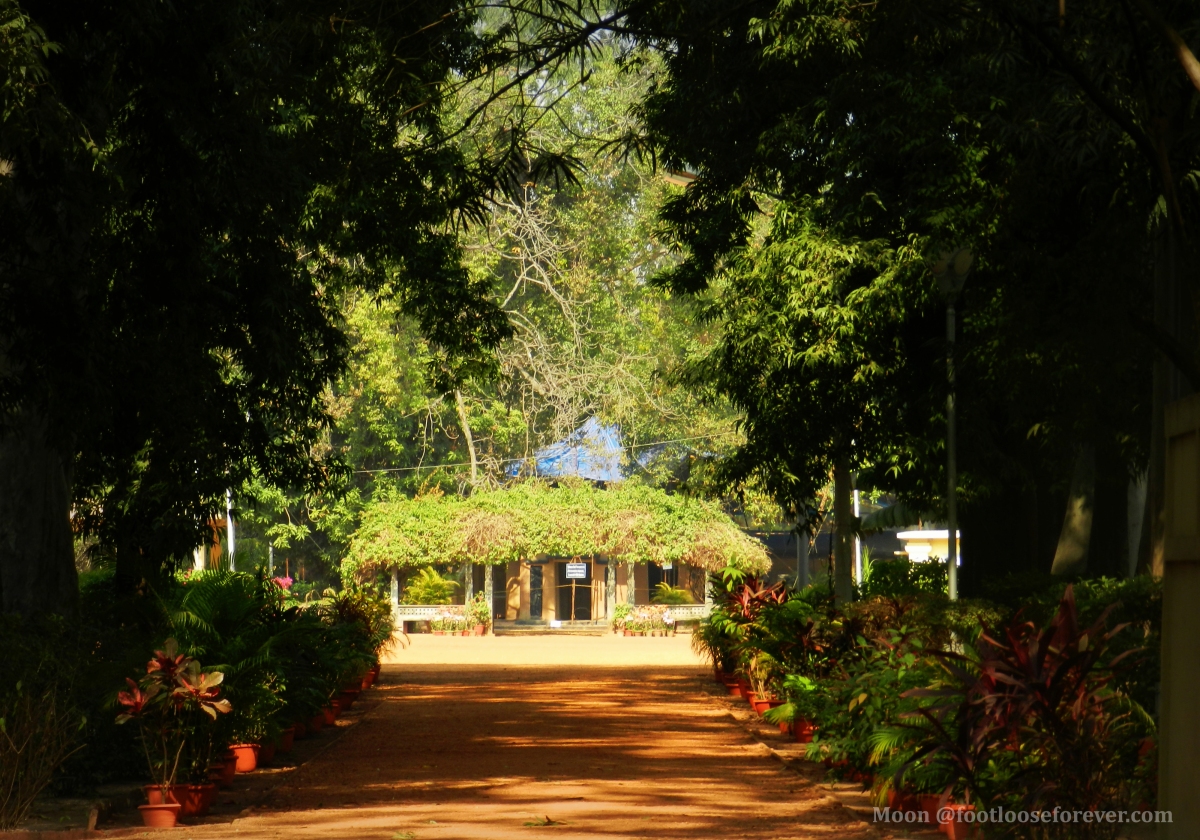
Ballavpur Wildlife Sanctuary
The wildlife sanctuary in Shantiniketan has now turned to a mere ‘deer park’ as the local people call it. As you go deeper into the jungle you will only find herds of deer. There was a time when the sanctuary was home to a variety of animals. But today only spotted deer are the only species left. We watched the deer playing and grazing all by themselves. Some were a bit curious and peeped from behind the bushes and observed us.

As long as we were inside the sanctuary it was very cool and comfortable under the canopy of towering trees. When we came out of the park the it felt hot in the early afternoon sun even in January. We were hungry and a bit tired. It was better to go back to the hotel for a refreshing shower and some tasty meal.
Khoai-Sonajhuri-Saturday Market
Reloaded and rejuvenated we set out towards Khoai at around 3 pm. The Khoai Mela or Shanibarer Haat or ‘Saturday Market’ which is a temporary, open-air market where locales sell various items starting from musical instruments to dokra handicrafts to ethnic jewellery and hand-loom sari and dress materials. Apart from Tagore and Visva Bharati this market was a chief attraction for me. Set beside Khoai, the deep dry riverbed, with Sonajhuri Forest in the backdrop, this Saturday Market is the place to feel the vibe of Shantiniketan.

Although I did not find anything cheap (as we think about local markets) but there were plenty of things that ignited my interest.


The baul singers in their dazzling robes sang soulful folklores while playing ektara (single-stringed instrument) or dotara (two-stringed instrument).
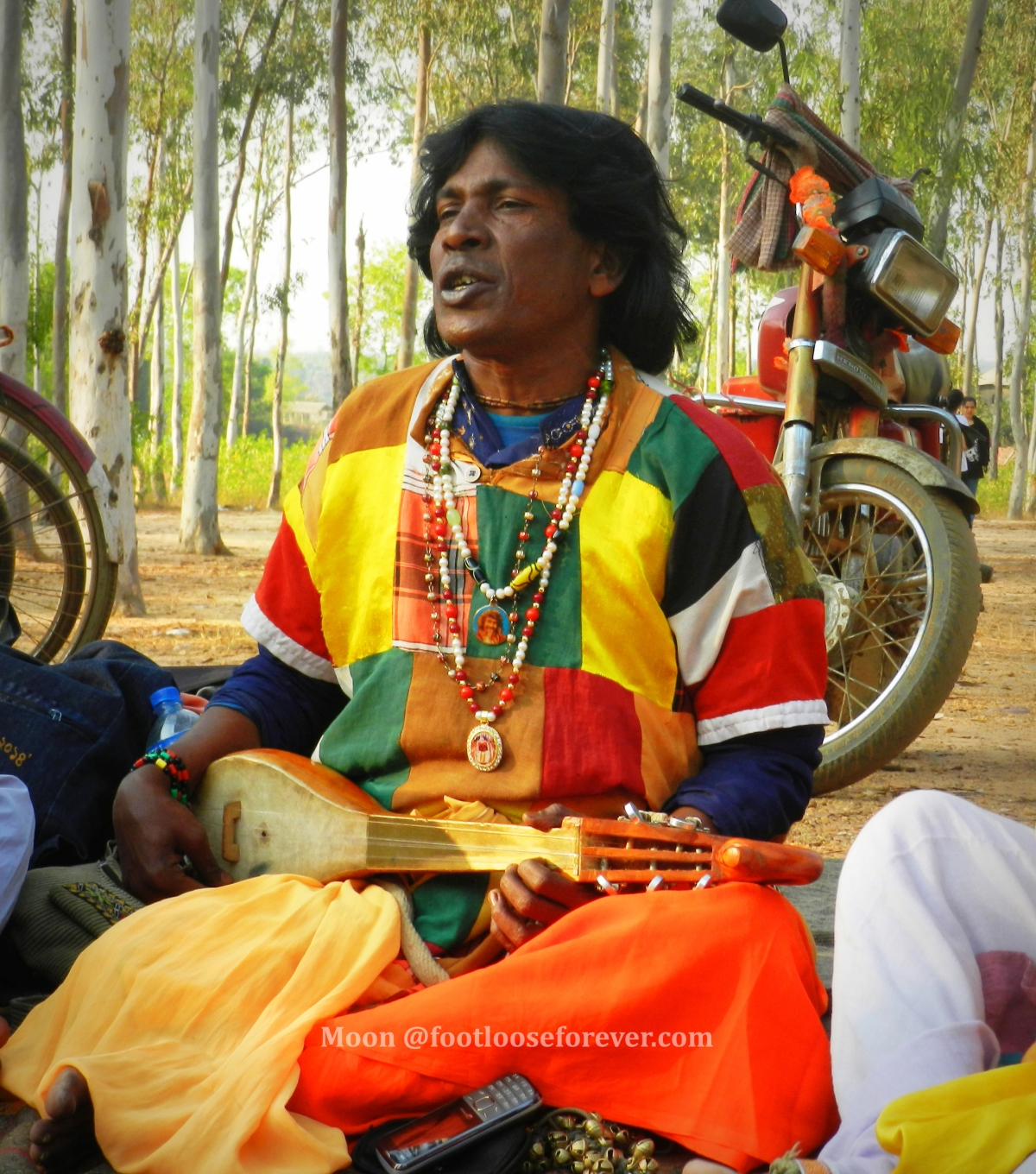
We roamed around in Sonajhuri forest for some time and sat by the Khoai and took pictures.
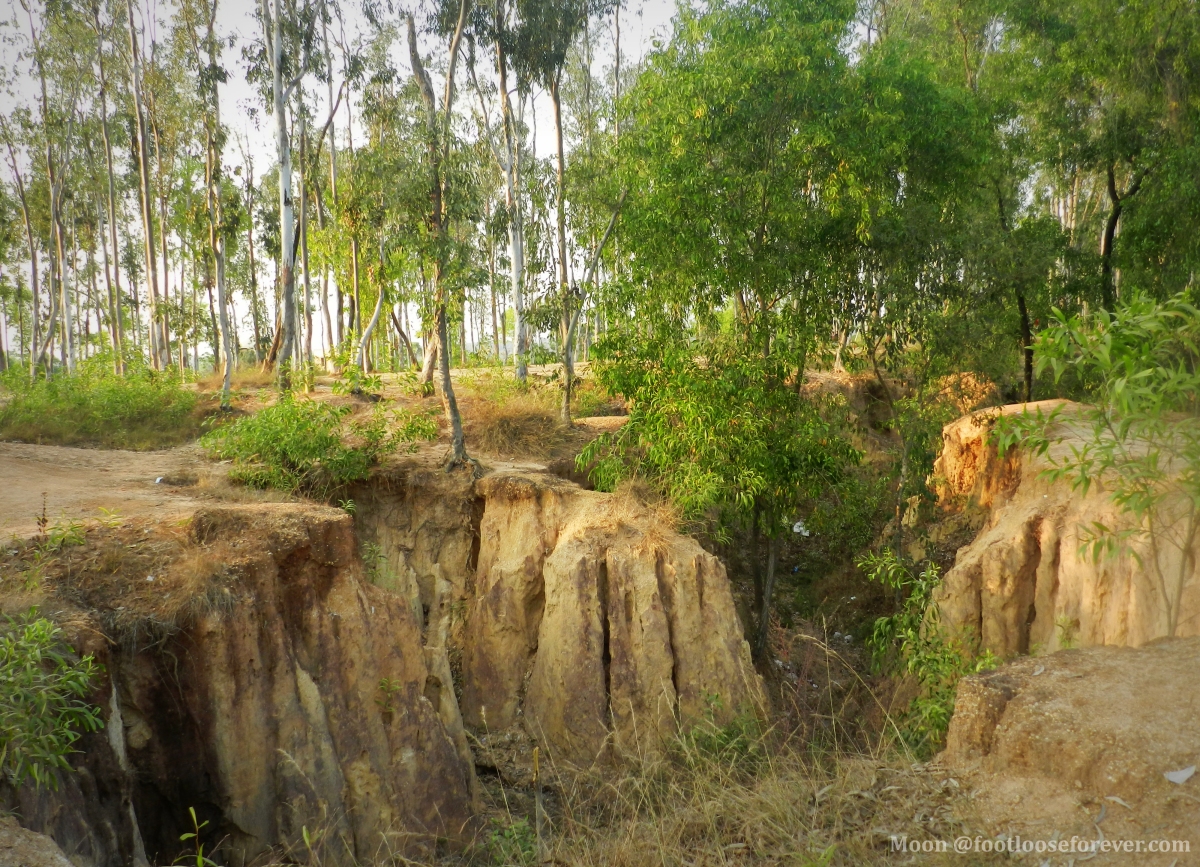
After wandering about an hour I felt an urge of having tea. It’s a Bong habit of getting tea-thirsty as soon as the clock strikes five in the afternoon. But a tea stall was hard to find in a place like this. Suddenly I saw a small crowd at a distance. Approaching closer I discovered my saviour. Crowd gathered around this young girl selling tea/coffee. She carried a huge flask that contained hot water for making tea and it was finished in an hour.
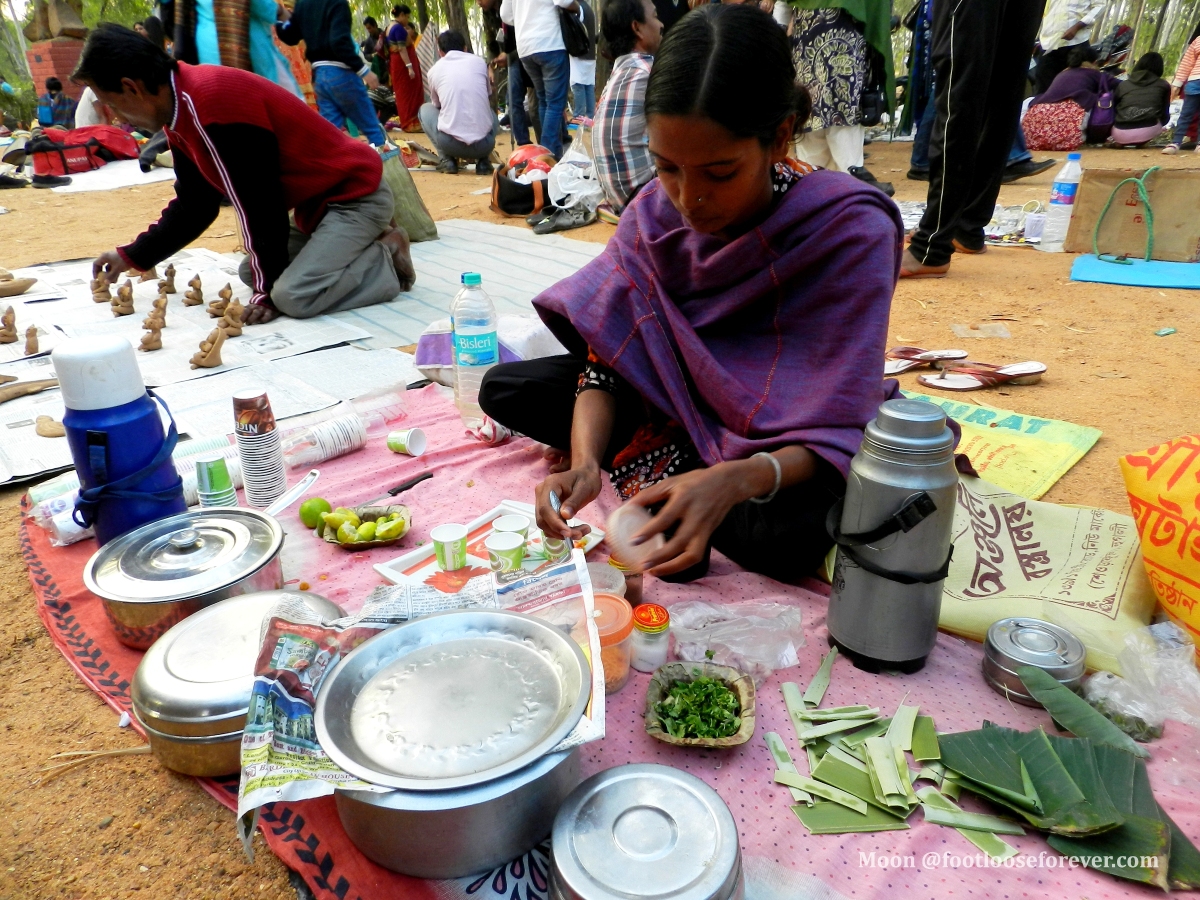
The market dissolves at sunset. When I finished my tea it was almost 5:30. The shadows of lanky eucalyptus trees grew taller reminding us that it’s time to leave. Though I wanted to spend some more time there our rickshaw puller said it becomes too dark after sunset and there are no street lights. So we had no choice except to get on the rickshaw and return to the hotel.

That evening Baul Monn arranged a concert by local band who offered wonderful fusion of folk songs with electronic musical instruments which we enjoyed very much. I went to bed thinking about my ‘venture’ next morning and dreamt of Sonajhuri and the colorful Saturday Market that night… 🙂

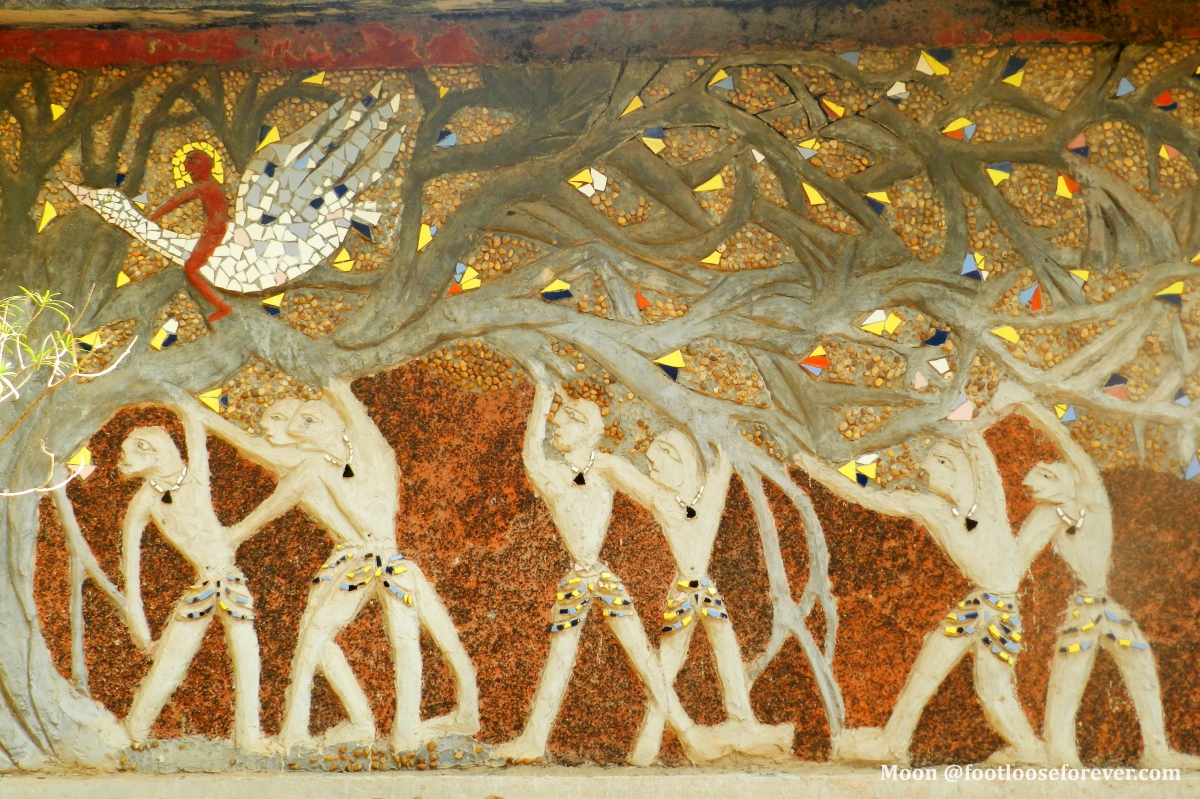

Nicely reviewed
LikeLike
Beautiful place! Love to visit.
LikeLiked by 1 person
Do visit. You’ll fall in love with the place 🙂
LikeLike
wow moon thanks for your blog .Lot of information
LikeLiked by 1 person
Thank you for the virtual tour. I want to meet a baul singer and listen to the music
LikeLiked by 1 person
and I am sure you’ll love it 🙂
LikeLiked by 1 person
Yep, I also have the same feeling 🙂
LikeLiked by 1 person
After reading this post, I feel it is a must visit place. 300 is quite economical. Loved all the shots, Moon.
LikeLiked by 1 person
I am so happy to know that 🙂
LikeLike
300 is very high rate if you have time please walk and visit and feel the blessings of nature and santiniketan’s real peace.
LikeLike
darun hoyechhe sob chhobigulo…khub chena taao jotobaar dekhi, notun laage… 🙂 Wonderful post…
LikeLike
What a beautiful place it is ! Tranquil and drenched in history and literature …
The pics have captured the vastness and even that sense of serenity and calm. Nice post 🙂
LikeLiked by 1 person
Yes…it’s truly a peaceful place in the lap of nature …thank you for your kind comments. I am happy you dropped by my blog 🙂
LikeLiked by 1 person
Wow, what an experience. I love the place wiherebGurudev’s father meditated…
LikeLiked by 1 person
Yes….it’s was a wonderful experience to be there …Thank you for dropping by and sharing your thoughts. 🙂
LikeLike
It must have been so heavenly being out there. I think it is a perfect place to do meditation and free our minds off the world around us.
LikeLiked by 1 person
Absolutely! I wish I could stay there for a few more days 🙂
LikeLiked by 1 person
Truly a beautiful calm place. I was there in 2013 and blogged on it elaborately. 🙂
Great pics and info by you.
LikeLiked by 1 person
Yes …the place has a special charm to feel with your heart. Let me find and read your account of Shantiniketan. You must have seen something unique with your keen eye for detail.
LikeLike
Great photos and very well written story on Shantiniketan. Really good read.
LikeLiked by 1 person
I am glad you read it and liked it, too. 🙂 Thank you for kind appreciation.
LikeLike